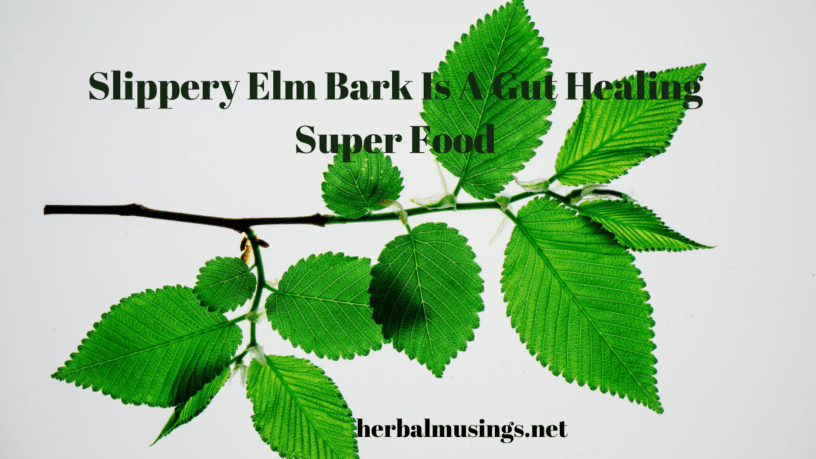The slippery elm tree (Ulmus rubra) is found in the eastern part of the US. The inner bark of slippery elm is used for medicinal purposes.
This inner bark is ground into a powder and made into food, poultices and lozenges. This is a nourishing herb assisting everyone from babies to the elderly because of its excellent healing and strengthening abilities.
What Is Slippery Elm?
Healthy s
This medicinal bark is used for treating a variety of ailments from healing digestive discomfort, soothing stress and anxiety, to treating symptoms of psoriasis.
Not only is it a potent source of antioxidants but the bark contains a host of minerals, such as magnesium, iron, calcium, potassium, vitamin C and B vitamins, to name a few. This bark packs a powerful medicinal punch!
Slippery elm bark possesses as much nutrition as oatmeal, and when made into a porridge it makes a wholesome and sustaining food for babies and invalids.
More Health Benefits
Slippery elm contains mucilage that when mixed with water becomes a gel. This slippery, thick mucilage soothes and coats your mouth, throat, stomach and intestinal tract giving relief to many digestive issues. Digestive issues such as Crohn’s disease, gastritis, acid ingestion, ulcerative colitis, diarrhea, GERD, diverticulitis and IBS get relief by drinking the tea or eating the lozenges.
A poultice applied to boils, spots or abscesses helps draw out toxins. Apply a poultice to wounds, burns and any inflammation, it will help soothe and aid in healing, reducing pain and swelling. A poultice will help draw out splinters.
To make a poultice: mix the powder with hot water to form a thick consistency, spread smoothly on a soft cotton cloth and apply over the parts affected. This is a soothing and healing poultice for wounds, skin inflammations, burns and splinters.
There’s no known contradictions with medications or other herbs.
Constipation And Digestion
Because the inner bark is a demulcent, meaning it’s moistening to the tissues, it has the capacity to coat mucus membranes in your throat, stomach and intestines.
This mucilage works to calm inflammation and irritation in the digestive tract. In one study, when IBS sufferers were given a mixture containing slippery elm, they experienced a reduction in the severity of symptoms like diarrhea, constipation, abdominal pain, and bloating. With constipation, it helps to bulk and soften the stool and when diarrhea is present, the slippery elm swells to produce more of a formed stool.
Soothes And Calms A Sore Throat
Slippery elm is also used for upper respiratory issues like cough, sore throat, laryngitis, and tonsillitis. The demulcent effect works the same way it does in the digestive tract. The mucilage coats your throat, which calms irritation while antioxidants fight inflammation.
Drinking slippery elm teas or dissolving lozenges in your mouth will help soothe a sore throat and cough.
Helps Relieve Acid Reflux Symptoms
Drink a mixture of 1-2 tablespoons of slippery elm in a glass of water after a meal and before bed to to ease acid reflux symptoms. This eases irritation and inflammation by forming a protective coating on the walls of your stomach and esophagus.
Relief Tea
Ingredients
- 1 TBS slippery elm powder
- cold water
- 2 cups boiling water
Directions
- Mix 1 tablespoon of powder with cold water to form a thin paste
- Pour 2 cups of boiling water in the paste stirring constantly until it is thick like oatmeal.
- This can be flavored with cinnamon, nutmeg or citrus rind.
- Take unsweetened 3x a day for relief
Personally, I love these lozenges they are easy to take with you so you have them when ever you need them. Put one or two in your mouth and let dissolve then swallow. Take as often as you need them.
Slippery Elm Lozenges Recipe
Ingredients
- 1 oz slippery elm bark powder
- honey
Directions
- Put 1 oz of bark powder in a bowl.
- Slowly add honey, stirring constantly, until you have a thick paste
- Roll your slippery elm paste into small balls
- Roll the balls in more slippery elm powder to coat them
- Store in a tightly-closed tin
- These will keep for up to ten years
In my opinion, this medicinal bark is a super food for how it assists the body in healing. Slippery elm has no serious side effects. Because it coats the digestive tract, it may slow down the absorption of other drugs or herbs. Take slippery elm 2 hours before or after other herbs or medications you are taking.
This post may contain affiliate/referral links. Read my full Disclosure/Disclaimer Policy.
